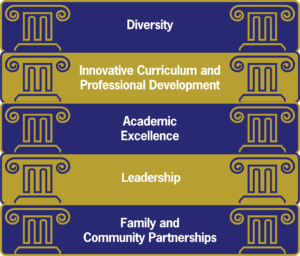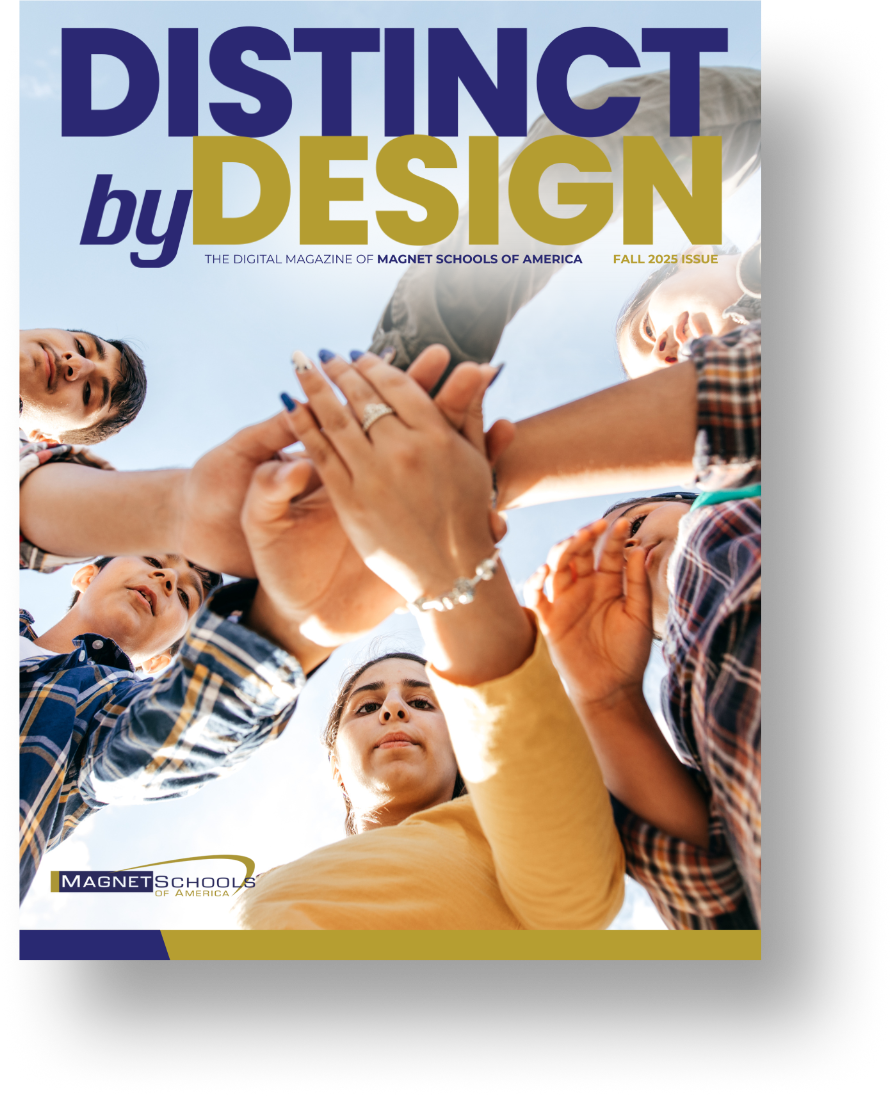 Magnet Schools are founded on the five pillars of diversity, innovative curriculum and professional development, academic excellence, high quality instructional systems and family and community partnerships. The synergistic relationship of these five equally held tenets is not merely a foundation, but a compass moving our students/children forward to a well prepared future.
Magnet Schools are founded on the five pillars of diversity, innovative curriculum and professional development, academic excellence, high quality instructional systems and family and community partnerships. The synergistic relationship of these five equally held tenets is not merely a foundation, but a compass moving our students/children forward to a well prepared future.
- Diversity is a cornerstone that offers students a global educational experience, which includes equity and access for every child creating a foundation for successful magnet schools. Through marketing, recruitment strategies, and a balanced selection process, schools strive to generate student populations that are reflective of their communities.School choice provides educational environments that model empathy, respect, and collaboration, and inclusion of all cultures.
- Innovative Curriculum and Professional Development is developed to assure theme-based relevant instruction to students. Effective teaching strategies, emulating best practices, are implemented through the inclusion of the school’s theme. Curriculum is based on high quality rigorous standards that prepare students for higher education and career success.
- Academic Excellence is demonstrated through a commitment to multi-dimensional instruction focused on student needs. Multiple assessment strategies are employed to monitor student learning, progress and success. High expectations are clearly articulated and personalized supports are in place to address the interests and aspirations of all students. In addition, positive peer support, an outgrowth of mixing middle-class and low-income students, has been instrumental in encouraging students to dream bigger and be more engaged in school.
- Leadership at the school and district level is demonstrated by a commitment to continuous collaboration and monitoring by administrators for effective magnet school organization and systemic improvements. Leadership is rooted in well-educated professional educators. Decisions about hiring, budgets, training, and pathways are collaborative and focus on sustainability of high-quality instructional systems.
- Family and Community Partnerships are mutually beneficial, offer a system of support, shared ownership, and a caring spirit and are designed to enhance a theme integrated educational environment. Partnerships with parents are essential for a rich educational experience for students. Community partnerships include a diverse array of stakeholders including business, health and human services, and policy makers to support the education of all students and offer them a real-world view toward the future.




